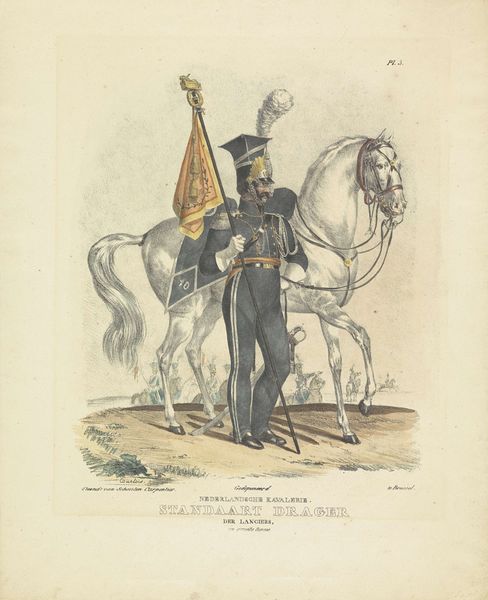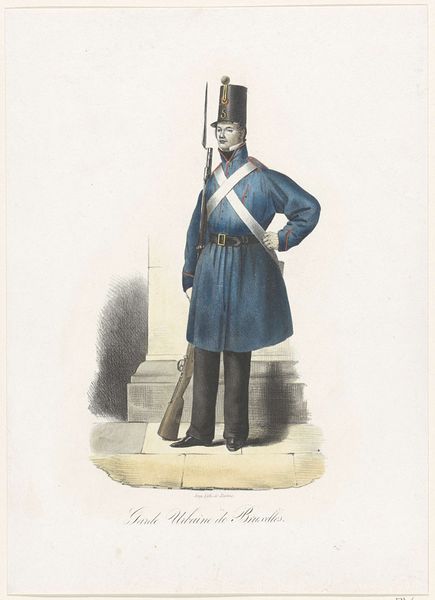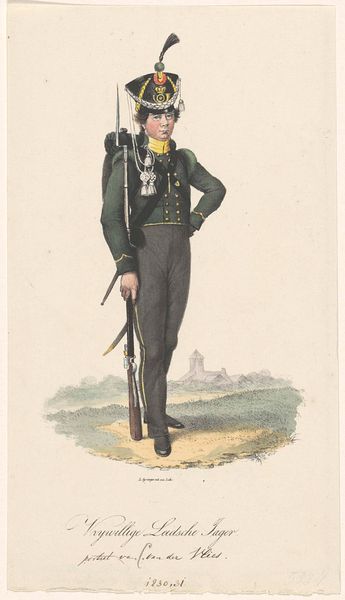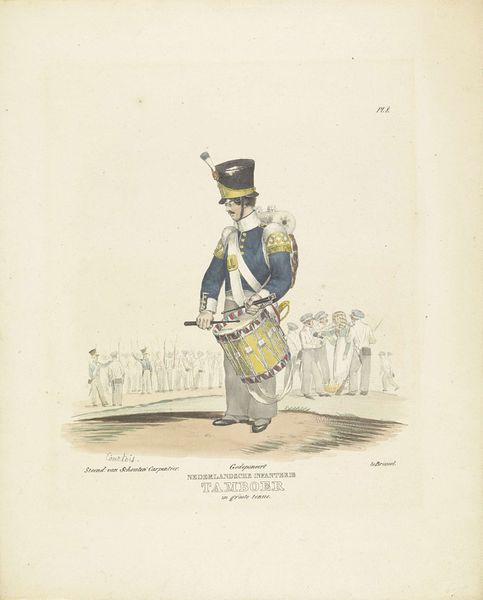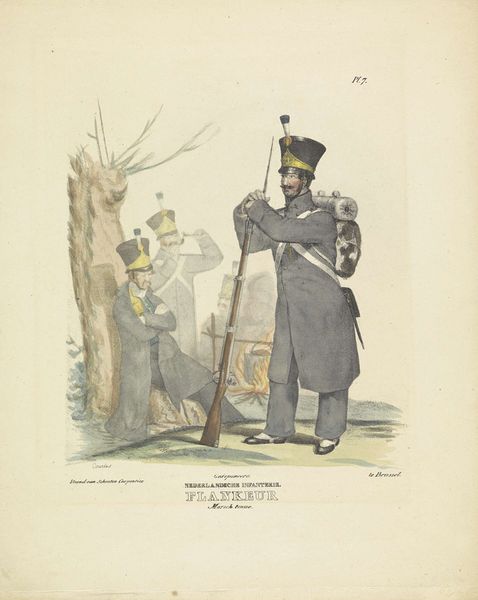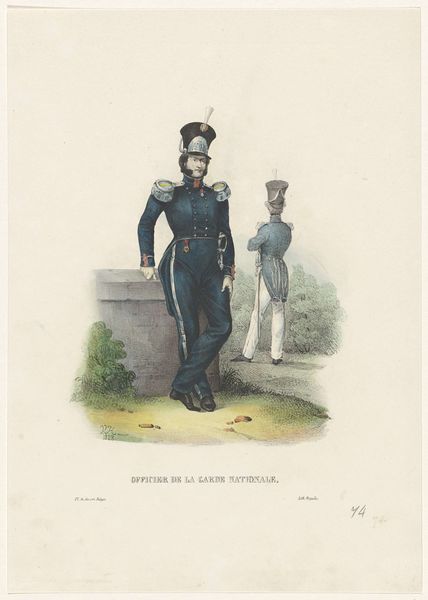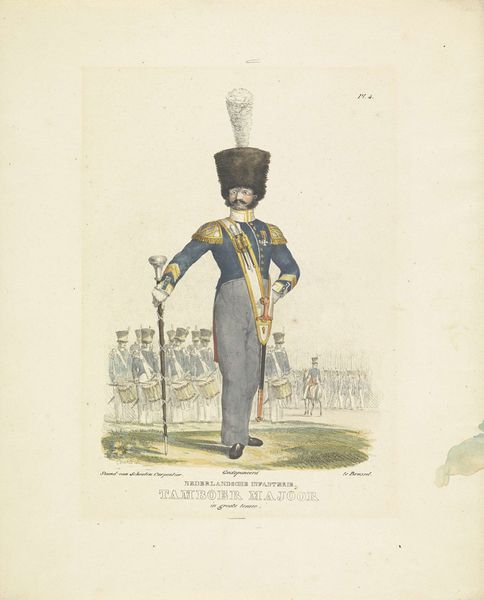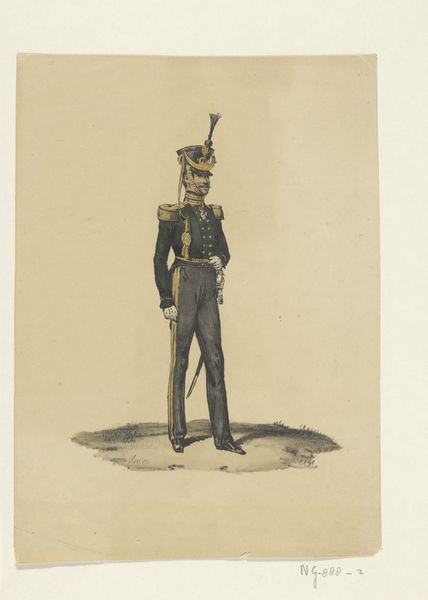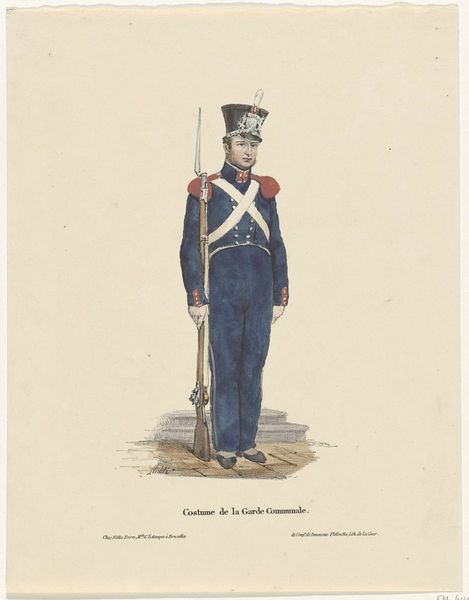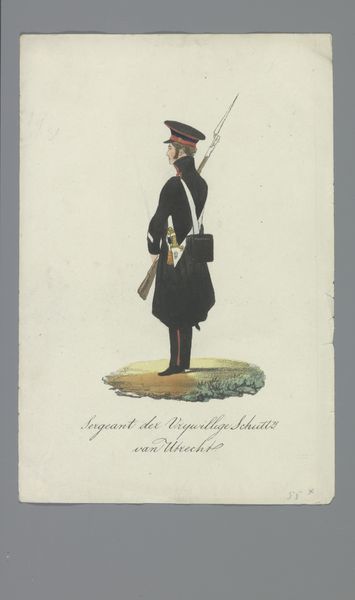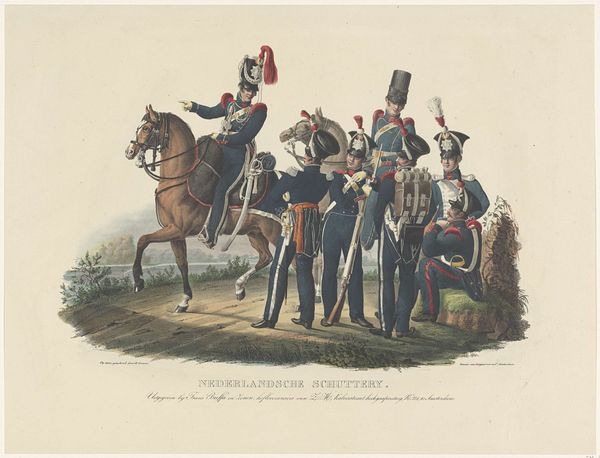
drawing, lithograph, print
#
portrait
#
drawing
#
lithograph
# print
#
figuration
#
costume
#
sketchbook drawing
#
watercolour illustration
#
history-painting
#
academic-art
#
realism
Dimensions: height 290 mm, width 218 mm
Copyright: Rijks Museum: Open Domain
Curator: Up next is “Officier van de Nationale Militie, 1829,” which translates to "Officer of the National Militia, 1829," attributed to Jean-Louis Van Hemelryck. It's a lithograph, so a print made from a stone matrix, featuring watercolor detailing. Editor: I'm immediately struck by the formality. It's stark; the officer seems to embody a certain… detachment. There's such controlled precision in the lithography that really mirrors the societal structure being represented, or rather, upheld by this man's office. Curator: Precisely. Lithography allowed for relatively quick and inexpensive reproduction, which facilitated the wide distribution of images like this, consolidating state power in early 19th century Europe. You see these printed images functioning like modern state propaganda. Editor: Oh, absolutely. I think this piece also begs some important questions about the officer and his relationship to his station. Is he merely an avatar for the concept of authority or an individualized representation of the social structures propping up 19th century European patriarchal control? Curator: It’s both, of course. Hemelryck relied on relatively inexpensive material – lithographic limestone and watercolor pigments - and, given the mass production aspect of printmaking, there's certainly a leveling of artistic individuality here. But his individual skill at representation elevates this particular piece above simple propaganda. The sharpness of line and the subtly modeled volumes elevate the officer's importance as a character. Editor: And it's through this individualization, this kind of almost clinical rendering of his posture, dress and features, that those oppressive systems of power are naturalized, presented as immutable. Curator: It's fascinating to see how the material properties of lithography -- its reproducibility -- serve specific ideological ends during this tumultuous period of nation-building. Even his elaborate uniform denotes an investment in highly specialized textile production and material acquisition to create symbols of dominance and power. Editor: It's a fascinating portrait precisely because it feels so impersonal and yet seems determined to showcase one very specific man; there is a clear push-pull effect. Examining Hemelryck's "Officer of the National Militia, 1829" definitely underscores how aesthetic choices often reflect broader cultural forces, with emphasis on how printmaking influenced civic life in the 1800s. Curator: Absolutely.
Comments
No comments
Be the first to comment and join the conversation on the ultimate creative platform.
